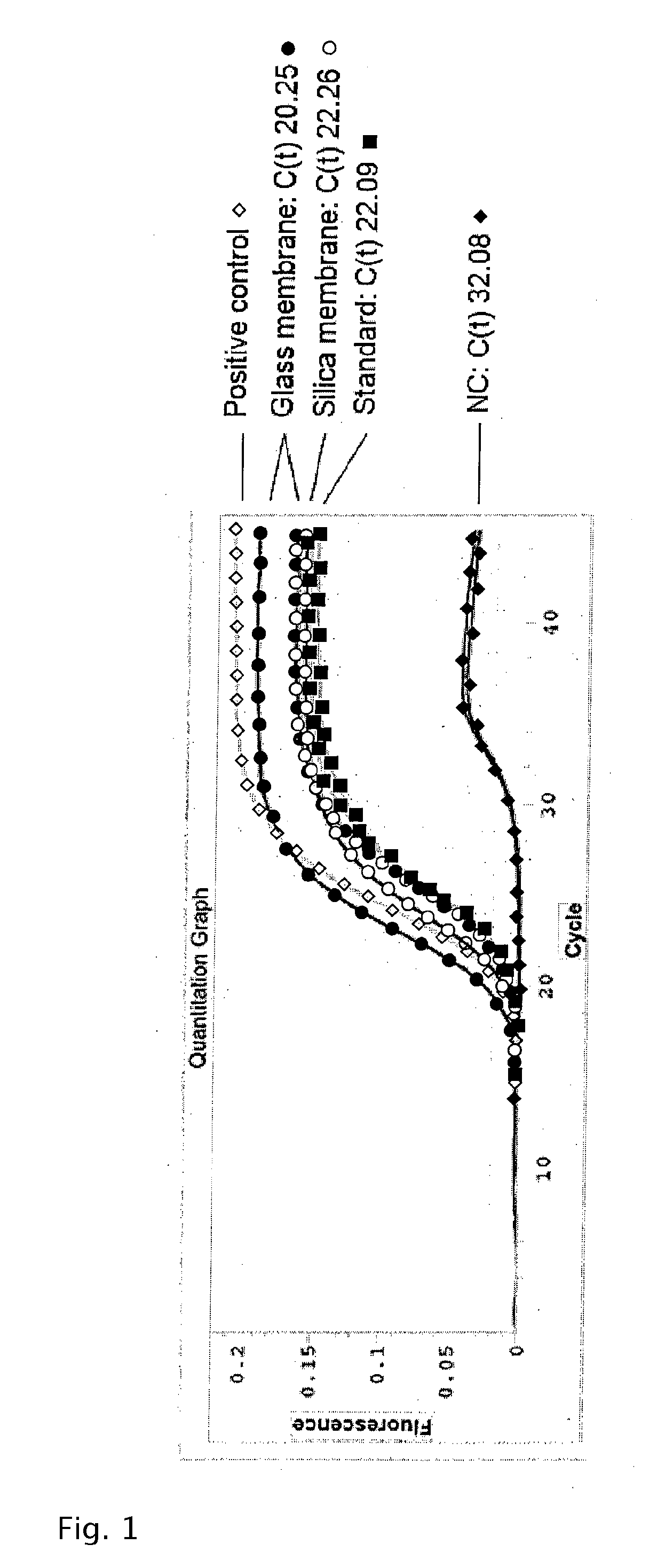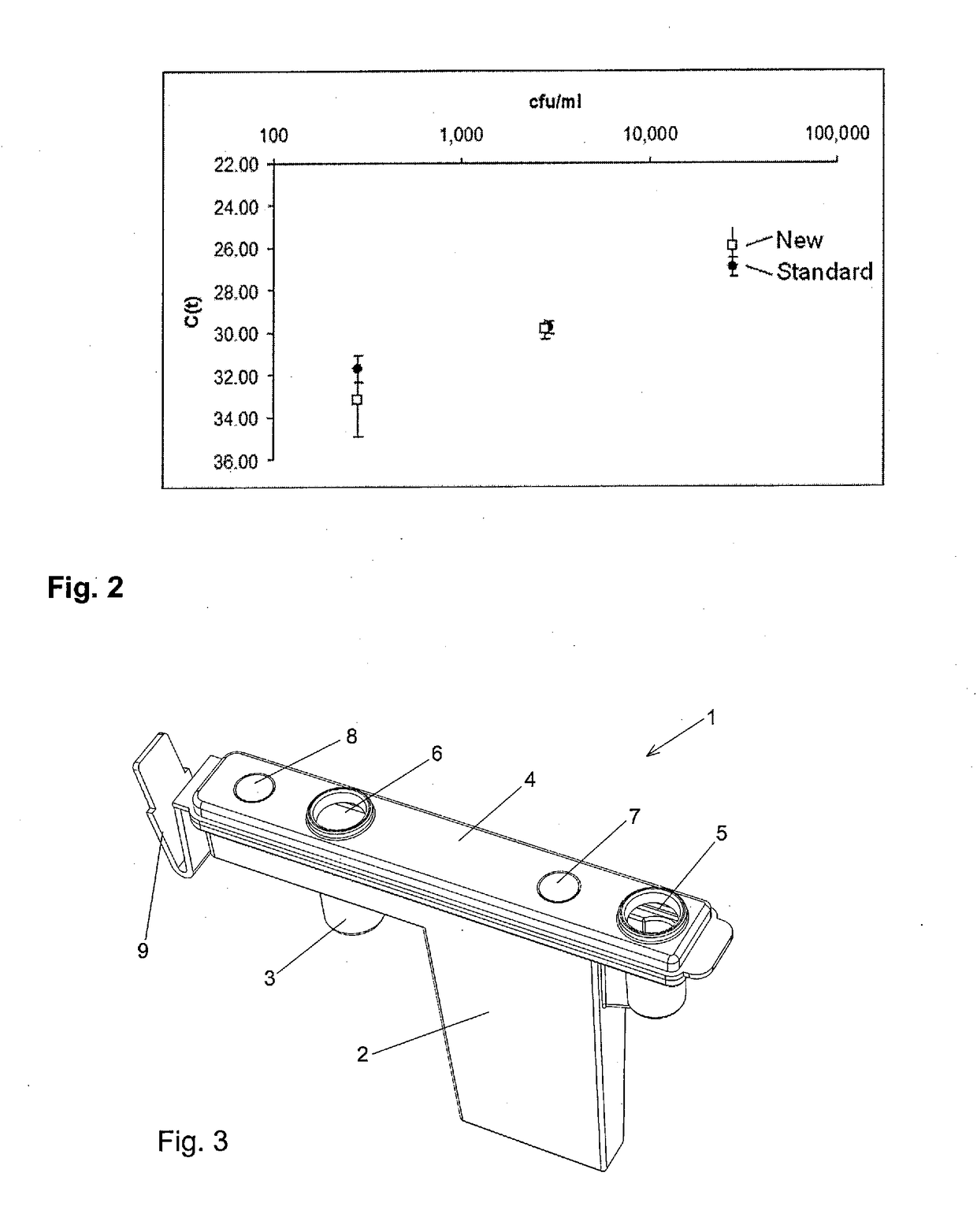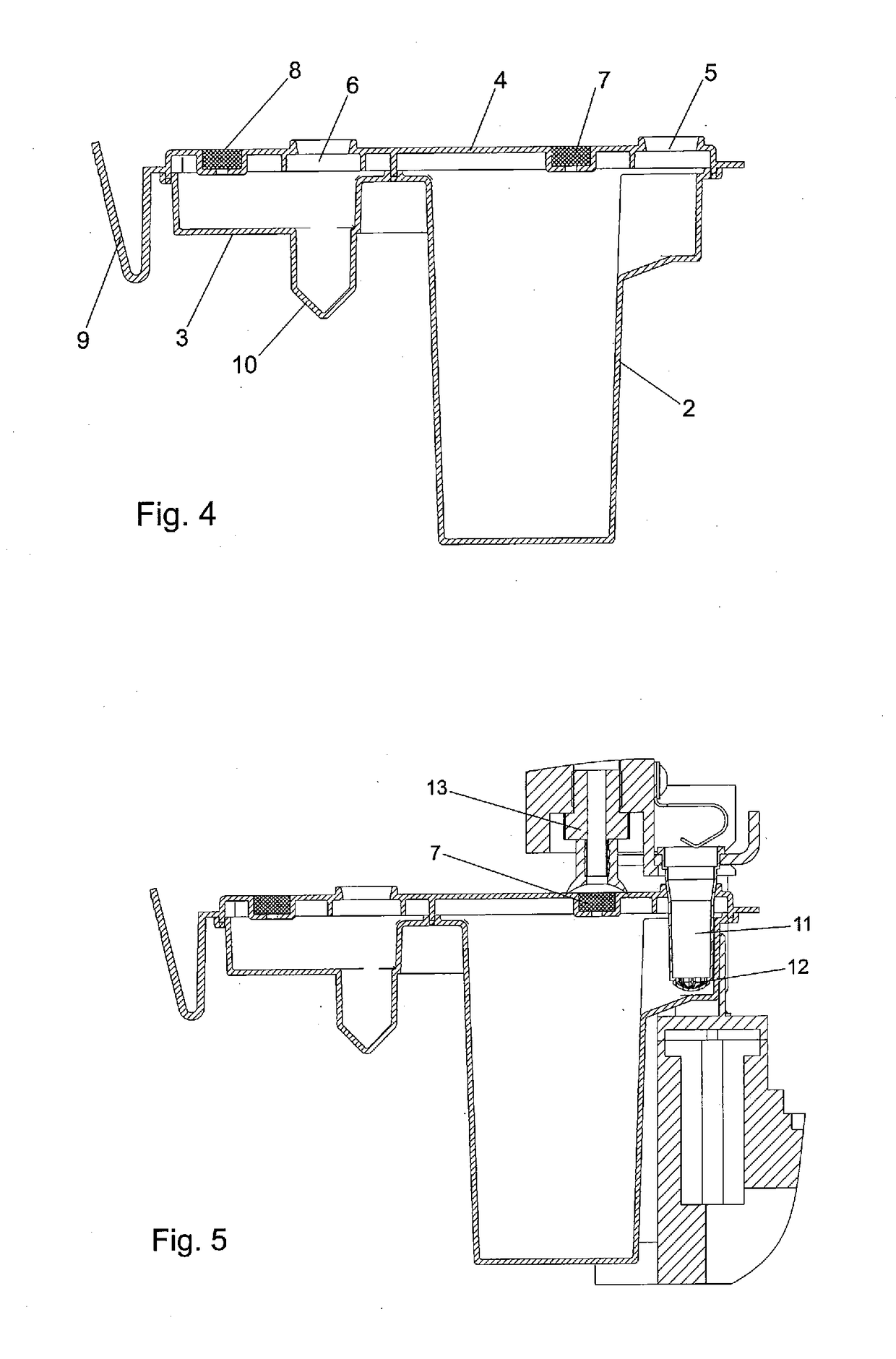New method for isolating microbial DNA
a dna and microbial technology, applied in the field of isolating and purifying microbials, can solve problems such as interference with the detection of microbial dna
- Summary
- Abstract
- Description
- Claims
- Application Information
AI Technical Summary
Benefits of technology
Problems solved by technology
Method used
Image
Examples
example 1
Protocol for Isolating Bacterial DNA from a Liquid Sample
[0101]This example shows the applicability of the method of the invention for enriching and / or isolating nucleic acids from microbial cells which are present in a liquid sample, e.g. a tab water sample.
[0102]Phase 1: Filtration and Lysis of Microorganisms[0103]Filtrate liquid sample, e.g. 1 to 2 mL, by placing a silica or glass membrane spin column (Qiagen, Hilden, Germany) in a vacuum station; pipette 0.6 mL of the sample into the column and apply vacuum until sample has completely passed the membrane; repeat the procedure with the rest of the sample.[0104]Wash spin column with 0.6 mL buffer 2 by vacuum filtration until all buffer is passed through.[0105]Mix 80 μl buffer 3 with 20 μl BugLysis. Add to spin column and apply a short pulse of vacuum to soak the membrane with the liquid.[0106]Incubate at room temperature (20-25° C.) for 30 min.[0107]Mix 150 μl buffer 4 with 20 μl proteinase K. Add to spin column and apply a short ...
example 2
Protocol for Isolating Bacterial DNA from a Human Blood Sample
[0114]This example shows the applicability of the method of the invention for enriching and / or isolating nucleic acids from microbial cells which are present in a liquid sample that comprises both microbial cells and human blood cells.
[0115]Phase 1: Generation of Blood Cell Lysate[0116]Transfer 1 mL fresh whole blood (stabilized with EDTA, heparin or citrate) from a blood collection tube to a 2 mL Eppendorf tube. Add 0.8 mL Buffer 1 and 10 μl MolDNase for human blood cell lysis. Mix the sample by vortexing.[0117]Incubate at 45° C. for 10 min (degradation of free DNA).[0118]Mix with 20 μl proteinase K.[0119]Incubate at 45° C. for 10 min (liquefaction of lysate).
[0120]Phase 2: Filtration of Blood Lysate and Lysis of Microorganisms[0121]Filtrate blood lysate by placing a silica or glass membrane spin column (Qiagen, Hilden, Germany) in a vacuum station; pipette 0.6 mL lysate into the column and apply vacuum until lysate has ...
example 3
Isolation of DNA from S. aureus
[0132]6.8×104 cfu / mL S. aureus were subjected to the protocol of Example 1. DNA was measured in quantitative Real-Time PCR assay (Molzym Mastermix 16S). Standard: centrifugation method (Molzym MolYsis Complete5).
[0133]Result: The results are depicted in FIG. 1. It can be seen that the extraction of S. aureus DNA gave threshold values (glass membrane: mean C(t)=20.25; silica membrane: mean C(t)=22.26) which are comparable to standard centrifugation methods (mean C(t)=22.09).
PUM
| Property | Measurement | Unit |
|---|---|---|
| Fraction | aaaaa | aaaaa |
| Pore size | aaaaa | aaaaa |
| Vacuum | aaaaa | aaaaa |
Abstract
Description
Claims
Application Information
 Login to View More
Login to View More - R&D
- Intellectual Property
- Life Sciences
- Materials
- Tech Scout
- Unparalleled Data Quality
- Higher Quality Content
- 60% Fewer Hallucinations
Browse by: Latest US Patents, China's latest patents, Technical Efficacy Thesaurus, Application Domain, Technology Topic, Popular Technical Reports.
© 2025 PatSnap. All rights reserved.Legal|Privacy policy|Modern Slavery Act Transparency Statement|Sitemap|About US| Contact US: help@patsnap.com



